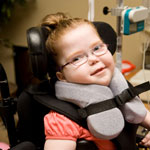Treatment of Birth Injuries May Include Cord Blood Stem Cells
 Advertisements in pregnancy magazines point out the many benefits of storing umbilical cord blood in case it is needed for future medical treatments. Yet, the cost makes many couples think twice. According to the Arizona Daily Star, saving umbilical cord blood costs an initial fee of $2,070 plus a yearly storage fee of $125. However, for one Arizona family, the fee was a small price to pay for the treatment of their child’s cerebral palsy birth injury.
Advertisements in pregnancy magazines point out the many benefits of storing umbilical cord blood in case it is needed for future medical treatments. Yet, the cost makes many couples think twice. According to the Arizona Daily Star, saving umbilical cord blood costs an initial fee of $2,070 plus a yearly storage fee of $125. However, for one Arizona family, the fee was a small price to pay for the treatment of their child’s cerebral palsy birth injury.
Cord blood stem cells offers treatment of birth injuries
The Fryar family stored the cord blood of all three of their children because they had a family history of cancer. They needed to use the cord blood when Luke was diagnosed with cerebral palsy at 15 months. Doctors said he likely suffered a stroke in-utero that left him lacking mind-body connection with no control over his right arm.
Luke began showing signs of improvement shortly following a 10-minute procedure at Duke University in North Carolina. “After having his infusion, within about a month or so, he began to look at his arm. He started to stroke that arm,” his mother recalled. “Before, in physical therapy, he’d spend five minutes playing and 45 minutes crying. But within a few months it was the opposite – 45 minutes of playing and working and five minutes crying.” Today, he shows no signs of the cerebral palsy that had impaired the right side of his body for more than a year. He is riding a bike and playing soccer – activities that his mother never thought possible.
Miracle reported for German toddler with severe infantile cerebral palsy
Back in May, Catholic Hospital Bochum in Germany reported that stem cell treatment had cured a 2.5-year-old boy who had suffered from cardiac arrest, severe brain damage, paralysis and a persistent vegetative state. His chance of long-term survival was estimated at just six percent. The desperate parents ordered the use of the boy’s cord blood nine weeks later after a diagnosis of infantile cerebral palsy was made. In the months that followed, the boy was able to sit and smile. Three years after treatment, he was able to eat on his own, speak simple sentences and walk with assistance.
Birth injuries and innovative treatment options
Studies of cord blood infusions’ impact on neurologically-damaged animals have proved restorative, says Dr. Hugh Miller, a maternal fetal medicine specialist at Tucson Medical Center. “There is not empiric evidence that it works in humans,” he adds, “but I’m supportive of the potential, and enthusiastic about the trials that are going on because this is an area that we need to explore.”
It’s not sure exactly how stem cells work in children diagnosed with cerebral palsy, blood cancer, anemia or childhood leukemia, but infusing a child with his or her own regenerative cord blood is a new concept that people have been sharing with the Cord Blood Registry – a storage facility that currently holds genetic material harvested from 425,000 newborns. The stem cell rich blood is frozen and stored in giant stainless steel flasks in liquid nitrogen at -354 degrees Fahrenheit.
While it may be early to speculate that cord blood will become a widely available and first course treatment for birth injuries, these findings represent a glimmer of hope for parents who have suffered the emotional turmoil of what was once a seemingly hopeless prognosis.


